Aerial Reconnaissance & Stereo Images - 3-D imagery and the Cold War
5 September 2019
Age Range: 11-14
During the 20th century, intelligence-gathering was one of the most important aspects of fighting a war. Analysis of aerial photographs played a crucial role in the Cold War.
The introductory video “Reconnaissance: The Cold War” looks at how the UK used aerial photography and other forms of surveillance to help prevent the Cold War developing into full-scale armed conflict.
In the history activity, students explore the development of the intelligence-gathering techniques used both during the Second World War and the Cold War.
In the STEM activity, students investigate camera design and how stereo photographs allow 3D viewing.
Find out how 3D imagery helped defeat Hitler (External site)
Equipment list
EQUIPMENT REQUIRED PER PAIR OF STUDENTS:
A cheap cardboard virtual reality viewer (eg Google cardboard) with lenses removed
The two convex/bi-convex lenses from the cardboard viewer
Another two identical convex/bi-convex lenses with a longer focal length and of same or slightly bigger diameter to those in the viewer (eg glass lenses with a 4 cm diameter and focal length of 20 cm).
White paper or card to form a screen
Graph or squared paper
Blu-tack
Two different coloured pens or pencils
Adhesive or masking tape
Scissors
A copy of the Stereo Diagrams
Mobile phone with camera
A cheap cardboard virtual reality viewer (eg Google cardboard) with lenses removed
The two convex/bi-convex lenses from the cardboard viewer
Another two identical convex/bi-convex lenses with a longer focal length and of same or slightly bigger diameter to those in the viewer (eg glass lenses with a 4 cm diameter and focal length of 20 cm).
White paper or card to form a screen
Graph or squared paper
Blu-tack
Two different coloured pens or pencils
Adhesive or masking tape
Scissors
A copy of the Stereo Diagrams
Mobile phone with camera
Attachments
- RAF 100 History The Cold War - Aerial Reconnaissance and Photographic Intelligence - historical information, guidance notes and workshop ideas (2.97 MB)
- Teacher Notes Stereo Images - (556.2 KB)
- Students Stereo Diagram - (539.4 KB)
- Student Instructions Cameras and 3D Images - (336.9 KB)
- RAF 100 History The Cold War (Welsh)
- Teacher Notes Stereo Images (Welsh) - (2.5MB)
- Student Instructions Cameras and 3D Images (Welsh) - (337KB)
- Students Stereo Diagram (Welsh) - (58KB)
- Reconnaissance Video
- Reconnaissance
